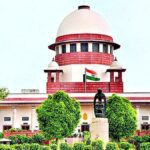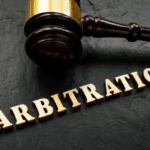In a dispute between the owner of a flat and the maintenance agency under the “maintenance agreement,” the court observed that its inclusion was mandated not on account of the “group of companies” doctrine but on the grounds that the maintenance agency’s authority was directly derived from the developer under the “service agreement” signed between them. The court then referred the builder/developer (non-signatory) of a building to arbitration. According to the High Court, the developer was directly profiting from the service contract with the maintenance company. Furthermore, the arbitration clause-containing maintenance agreements were intimately related to the aforementioned service agreement.
Therefore, the court decided that the non-signatory developer should be subject to arbitration under both the “intertwined estoppel theory” and the “direct benefits” estoppel theory. The Justice Sachin Datta-led panel stated that the court is only required to make a preliminary determination regarding the inclusion of the non-signatory in light of related agreements when it comes to petitions brought under Section 11 of the Arbitration and Conciliation Act, 1996 (A&C Act). Based on the developer’s influence over the maintenance agency’s operations, which was a party to the arbitration agreement, it was determined that the petitioner had established a prima facie case of imposition.
Facts
The petitioner is the owner of several business units located in certain buildings. The “maintenance agency” for these buildings are respondents Nos. 1 and 2. When disagreements emerged between the parties about the maintenance agreement, the petitioner invoked the arbitration provision and applied to the Delhi High Court for an appointment of a Sole Arbitrator under Section 11 of the A&C Act.
The petitioner stated that respondent number 3, M/s V3S Infratech Ltd, who is the builder/developer of the aforementioned buildings, would also be a required party in the proposed arbitration in addition to respondent numbers 1 and 2, who are parties to the maintenance agreement. This is so because, according to an “agreement for services” that the developer and respondent no. 1 completed, respondent no. 1 Surya Maintenance Agency Pvt Ltd was chosen by the developer to serve as the maintenance agency. The third respondent/developer responded by claiming that it is not a party to the pertinent maintenance agreement that contains the arbitration provision. Additionally, it claimed that the maintenance firm is not a member of its group, a sister company, nor a subsidiary. Therefore, it cannot be arbitrated under the “group of companies” approach.
Decision and Analysis
The court determined after reading the “agreement for services” signed by the developer and the maintenance agency that the maintenance agency only acts in accordance with the permission provided by the developer under the aforementioned agreement. Additionally, the developer has the authority to cancel the maintenance agency’s services and undertake an audit to ensure that its obligations are being met. The contract also included a revenue-sharing structure between the developer and the maintenance firm. The court further noted that the petitioner’s and the maintenance agency’s maintenance agreement explicitly stated that the latter had been hired by the developer to perform maintenance and security-related services.
The court reviewed the case’s facts after citing the Supreme Court’s ruling in Chloro Controls India (P) Ltd. v. Severn Trent Water Purification Inc., (2013). The High Court found that the service agreement between the developer and respondent no. 1, in accordance with which it was chosen to serve as the maintenance agency, and the maintenance agreements signed by the petitioner and the maintenance agency, on the other hand, had a “direct commonality of the subject matter.” The bench consequently decided that the developer’s inclusion in the arbitration proceedings was required, not because of the “group of companies” doctrine, but rather because respondent No. 1’s power to act as a maintenance agency directly descended from the developer under the terms of the service agreement, they had both signed. Furthermore, the maintenance agreements with an arbitration clause to which the petitioner is a party and which the stated service agreement was inextricably related. The court further said that “the agreements in question must be read in conjunction with one another to derive the respective rights and obligations of the parties.”
A non-signatory party can be bound to an arbitration agreement by the principle of direct estoppel, which prevents such a party from deriving the benefits of a contract while disowning the obligations to arbitrate under the same, according to the Supreme Court’s ruling in ONGC Ltd. vs. Discovery Enterprises (P) Ltd. (2022). As a result, the court determined that it may send the developer to arbitration under both the “intertwined estoppel theory” and the “direct benefits” estoppel theory. The court granted the petition and directed the parties to arbitration after holding that it was impossible to evaluate whether or not the common area maintenance fees levied by the maintenance agency were exorbitant without the developer present. The bench further stated that the Arbitral Tribunal will conduct a more thorough investigation of the developer’s inclusion in the arbitration proceedings based on the arguments made by the parties and the evidence presented to it.
There are at least two distinct types of estoppel doctrine that apply in the non-signatory context: “the direct benefits” estoppel theory and the “intertwined” estoppel theory.
The direct benefits theory bears the hallmark of any estoppel doctrine-prohibiting a party from taking inconsistent positions or seeking to have it both ways by relying on the contract when it works to its advantage when it works to its disadvantage. The direct benefits doctrine reflects that core principle by preventing a party from claiming rights under a contract but, at the same time, disavowing the obligation to arbitrate in the same contract. According to this rule, a non-signatory may be compelled to arbitrate where the non-signatory knowingly exploits the benefits of an agreement containing an arbitration clause, and receives benefits flowing directly from the agreement. In cases where the advantages are only indirect, a non-signatory cannot be forced to arbitrate a claim. A benefit is indirect if the non-signatory takes advantage of the parties’ contractual relationship but not the agreement itself. Contrarily, the intertwined estoppel theory examines the nature of the dispute between the signatory and the non-signatory, in particular whether the issues the non-signatory is seeking to resolve in arbitration are intertwined with the agreement that the estoppel ie. signatory party has signed, rather than whether the non-signatory received any benefit. When one examines the usual fact pattern of an interlaced estoppel case, it is evident that the intertwined estoppel theory has the continuation of the effectiveness of the arbitration process as its key goal.



